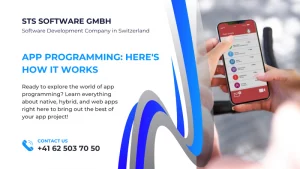In the dynamic and ever-evolving digital sphere, a website is not just an online presence—it’s the beating heart of modern interaction, essential for businesses and individuals alike. Yet, the creation of a truly remarkable website isn’t a hasty endeavor; it’s a meticulously detailed process that begins with a crucial step: estimating the expenses involved.
Delving into the world of web design and development necessitates an adept understanding of the intricate financial landscape that underpins these endeavors. Mastering the art of managing budgets in this realm isn’t just desirable—it’s imperative. The ability to decipher the initial costs, anticipate ongoing expenses, and factor in potential scalability isn’t merely a skill; it’s a cornerstone of success.
From the inception of the idea to the implementation and continual maintenance of the website, every phase demands a keen eye on the financial aspects. Navigating this terrain effectively means being equipped with not just technical prowess but also financial acumen. A website’s success and sustainability often hinge upon the adept handling of the budgetary considerations.
Understanding Project Scope
Understanding the scope of a project is a foundational step that precedes the intricate task of estimating costs. This crucial phase involves more than just outlining the objectives and goals; it requires a comprehensive exploration of every facet that comprises the web development project. It’s about defining the boundaries, determining the deliverables, understanding the functionalities required, anticipating potential challenges, and considering the overall depth and breadth of the project. Essentially, setting the project scope is akin to creating a blueprint that guides the cost estimation process, ensuring that every aspect and requirement is accounted for before moving forward with the development process.
Defining Project Goals and Objectives
When embarking on the journey of website development, unraveling the intricacies of its purpose stands as a fundamental cornerstone. Websites, in their essence, are dynamic entities, each crafted with a specific mission—whether it’s facilitating commercial exchanges, disseminating crucial information, or captivating users through interactive and engaging content. Discerning the primary motive behind a website’s existence serves as the bedrock upon which its scope and functionalities are delineated.
Consider the diverse landscape of websites: an e-commerce platform necessitates a sturdy infrastructure tailored explicitly for seamless transactions and a user interface that instills trust and convenience. Conversely, a portfolio website primarily functions as a showcase for creative ventures, steering clear of intricate transactional requirements. This stark contrast underscores the pivotal role that distinct goals and objectives play in shaping a website’s structure, content, and the overall trajectory of user interaction.
Delving deeper, these unique goals and objectives intricately interlace with the fabric of a website, influencing not just its outward design but also the intricacies of its content and the holistic journey it offers to users. The purpose becomes the guiding star, directing the design team’s decisions on layout, features, and even the language used in the website’s copy.
Moreover, these goals aren’t merely a static definition but evolve and adapt in response to market dynamics, user behavior, and emerging technologies. The iterative process of defining and refining project goals forms a continuous loop of analysis, adjustment, and innovation.
By anchoring the development process in a clear understanding of the website’s reason for existence, designers, developers, and content creators collaboratively orchestrate an ecosystem that resonates with the intended audience. It’s the fusion of purpose and functionality that births websites capable of not just meeting but exceeding user expectations, ultimately paving the way for success in the digital realm.
In essence, the journey of creating a website transcends the technicalities; it’s an amalgamation of strategic planning, creative execution, and an unwavering focus on fulfilling the specific goals and objectives that underpin its existence.
Differentiating Between Design, Development, and Related Services
The world of web creation is an intricate ecosystem composed of multifaceted elements that collectively shape the final product’s essence and cost. To navigate this landscape effectively, it’s essential to dissect and comprehend the distinct realms of design and development, as well as their interdependencies.
Design Essence: Unveiling Aesthetics and Usability
At the heart of every compelling website lies its design—a realm that delves into the visual aesthetics and navigational ease, encapsulated by User Interface (UI) and User Experience (UX). UI encompasses the visual layout, ensuring a seamless and visually appealing interface, while UX focuses on the overall user journey, striving to create an intuitive and enjoyable experience.
UI designers employ a blend of artistic finesse and technical expertise to craft visually striking interfaces that resonate with the brand’s identity. Simultaneously, UX specialists meticulously map out user interactions, ensuring every click and scroll aligns harmoniously with user expectations, thereby enhancing engagement and satisfaction.
Development Dynamics: Deciphering Coding and Functionality
Complementing the design aspect is the technical prowess of development, a realm centered around coding and functional implementation. Developers are akin to digital architects, translating intricate design blueprints into functional reality using programming languages, frameworks, and technology stacks.
They craft the underlying structure and functionality, ensuring the website’s seamless operation across various devices and platforms. From front-end developers responsible for the visual elements and interactive features to backend experts orchestrating databases and server-side functionalities, each plays a pivotal role in bringing the envisioned design to life.
Interplay and Synergy: Harmonizing Design and Development
While design and development represent distinct facets, their synergy is integral to creating a holistic and impactful web presence. Collaboration between designers and developers fosters an iterative process, where aesthetic visions blend seamlessly with technical feasibility.
The convergence of these disciplines brings forth responsive, aesthetically pleasing, and functional websites that captivate users while delivering a seamless and engaging experience. It’s within this collaborative nexus that the true magic of a well-crafted website emerges—a fusion of captivating design elements and flawless technical execution.
Beyond the Basics: Exploring Related Services
Beyond design and development, a spectrum of related services further enriches the web creation landscape. Content creation, Search Engine Optimization (SEO), web analytics, and ongoing maintenance constitute integral components that augment the website’s efficacy and longevity.
Content creators curate compelling narratives that resonate with the target audience, while SEO specialists optimize the website’s visibility, ensuring it garners the attention it deserves amidst the digital cacophony. Simultaneously, web analysts delve into data-driven insights, refining strategies for continual enhancement. Ongoing maintenance ensures the website remains up-to-date, secure, and aligned with evolving user expectations and technological advancements.
Impact of Project Complexity on Cost Estimation
The cost estimation of a web development project is intricately tied to its complexity, a factor that significantly shapes the financial outlay. A project’s complexity is a multifaceted construct, encompassing various elements that extend beyond its surface. Simple websites, characterized by rudimentary features and functionalities, are markedly distinguishable from their complex counterparts, which boast intricate and sophisticated attributes.
One of the pivotal determinants of complexity is the inclusion of responsive design, a feature that dynamically adjusts the layout and content presentation across various devices. Its implementation demands meticulous attention to detail, coding expertise, and testing protocols, all of which contribute to elevating the project’s intricacy and consequently augmenting the estimated costs.
Moreover, the integration of e-commerce functionalities further amplifies project complexity. Creating a seamless and secure online shopping experience involves intricate backend systems, payment gateway integrations, inventory management, and robust security measures. These intricate components necessitate specialized expertise and rigorous development, thereby escalating the overall project costs.
Custom features tailored to meet specific client requirements also play a pivotal role in amplifying project complexity. Building unique functionalities demands a deeper level of customization, extensive coding, and rigorous testing to ensure seamless integration and optimal performance. As a result, the inclusion of custom features significantly impacts the cost estimation of a web development project.
In essence, it is evident that the complexity of a web development project operates as a chief catalyst in determining the projected expenses. The amalgamation of responsive design, e-commerce integration, and custom features collectively elevates the intricacy of the project, consequently influencing the estimated costs in a profound manner. Understanding these intricate interconnections is paramount for accurate and comprehensive cost estimation in the realm of web development.
Conclusion
Navigating the intricate landscape of budgeting for web design and development culminates in several key takeaways. Understanding the nuances involved in estimating expenses is pivotal for businesses seeking to embark on a digital journey. The conclusion of this comprehensive guide sheds light on the multifaceted nature of budget estimation, emphasizing the importance of considering various elements such as design complexity, functionality requirements, platform choices, and ongoing maintenance. By comprehensively delving into these facets, organizations can gain a clearer perspective on the diverse cost structures associated with web design and development. Furthermore, acknowledging the significance of scalability and future-proofing strategies within budget allocation becomes evident in ensuring long-term success and adaptability within the digital sphere.



